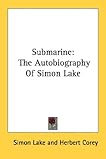The HMS Surprise from Daniel Fritsche on Vimeo.
During the Age of Sail, one ship evolved from a Mediterranean coastal galley to a far-ranging, fast vessel that served both as the eyes of the fleet and potent enough to take on ships larger than itself. The frigate served many missions, both as a scout, a convoy escort, and a commerce raider. In the British Royal Navy the frigate was the first ship that captains, or post-captains as they were called, could command.
Frigates began in the 15th century as fast, maneuverable galleys equipped with sails and oars. During the 80 years' War (1568–1648), when Spain tried to retrieve the rebellious Netherlands, privateers in the service of the Spanish crown known as Dunkirk Privateers, or Dunkirkers, developed a sail-only short-range raider that they called a frigate.
Based on their experience fighting the Dunkirker frigates the Dutch Navy developed the first ocean-going frigate. This 300-ton, 40-gun ship proved to be a potent development. Under the brilliant leadership of Dutch Admiral Maartin Troomp, their stunning success during the 1639 Battle of the Downs against the Spanish fleet led many European sea-going powers to develop frigates of their own.
The term "frigate-built" appeared in the 17th century to describe a fast, maneuverable ship. Eventually the French used the word frigate as a verb and adjective to mean "built long and low." Vessels in that day were considered ships if they carried three masts with square-rigged sails and had at least 28 guns on one or two decks. In the British rating system that sorted ships from most powerful (first-rate) to least powerful (sixth rate), frigates weighed in as fifth or sixth rate ships. Vessels that carried fewer than 20 cannon, such as gun sloops and cutters, were considered unrated vessels.
Don't let the notion of size fool you. The frigates could perform many tasks while the larger vessels, called ships or the line, were designed as huge gun platforms intended only to form into battle lines to attack other enemy fleets. While cost-saving measures during peacetime mothballed ships of the line, navies kept the frigates working hard. Some captains became so enamored of their frigates that they actually refused promotion in order to continue commanding frigates.
During the Napoleonic Wars, the 36-gun HMS Phoenix which along with the 74-gun HMS Dragon may have saved England from a French invasion when the two ships spooked French Admiral Villeneuve. Thinking the two ships were advance scouts of a much larger British fleet, Villeneuve abandoned his mission of sailing to Brest to escort the French invasion fleet across the English Channel.
Instead, he took the combined French and Spanish fleets to Cadiz, Spain, where the fleets were blockaded for a time by the British frigates until Villeneuve attempted to leave the harbor with his ships. Villeneuve's flight was observed by the British frigates which took the word to the main fleet under Vice Admiral Horatio Lord Nelson. The ensuing Battle of Trafalgar decisively ended French and Spanish naval threats.
The formidable nature of frigates have led many authors to make them their ship of choice. These include C. S. Forrester and Patrick O'Brian. Set during the Napoleonic Wars, Patrick O'Brian's Jack Aubrey novels featured the frigate HMS Surprise under the command of Post-Captain Jack Aubrey. The video animation at the top of this post depicts the HMS Surprise as she would have been during Aubrey's command.
In my own novel, Black Flag, Black Ship, a British vessel and a black frigate galley with a fearsome reputation encounter one another off the coast of Africa. What happens may astound you. Read Black Flag, Black Ship to find out!
Friday, May 21, 2010
Subscribe to:
Post Comments (Atom)














No comments:
Post a Comment